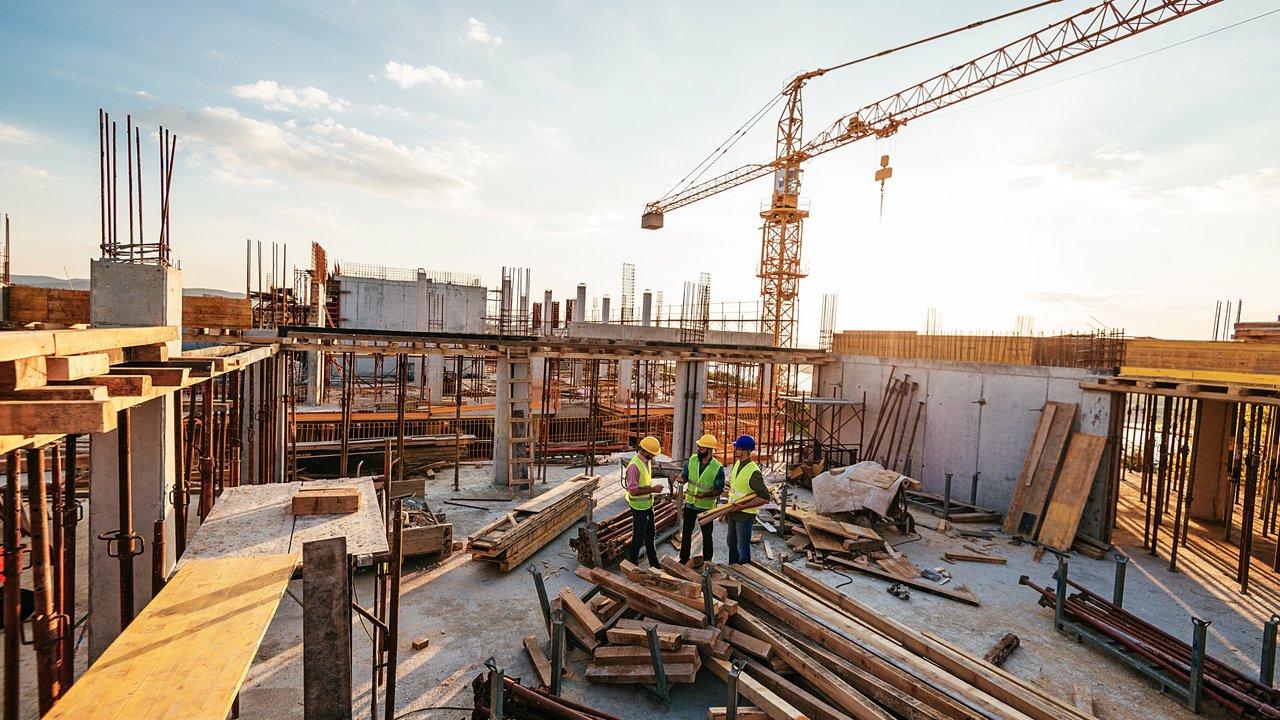
The Internet of Things (IoT) is growing. In more and more places, sensors are being used to transmit measured data to IoT platforms while taking IT security into account. On these platforms, the information is evaluated in real-time, mostly to immediately identify what action is needed and ensure a prompt response. A principle that has huge potential for loss prevention, as a pilot project of Munich Re and VHV Versicherungen shows in an exemplary manner.
Developers and construction firms cover themselves against damages to buildings during the construction phase with construction insurance. The leading German specialist construction insurer in this area is VHV Versicherungen in Hannover. Since April 2020, in cooperation with Munich Re, this company has been testing innovative technologies in order to generate new services and added value for policyholders and reduce loss ratios. The main driver of these technologies is water: “Losses due to moisture and water are an everyday occurrence in construction insurance, as well as in technical building insurance in general”, says Dr. Sebastian Reddemann, Board Member Property & Casualty at VHV.
Market-wide, around 50% of insured losses are due to weather-related ingress of water and frost, as well as to defective installations or vandalism to water distribution equipment. Many of these losses could be curbed and consequential damage like mould, for example, would also be avoidable if appropriate measures were taken in advance. Innovative monitoring and early warning systems could offer potential savings.
The idea: sensor-based building monitoring
The pilot project: a building site in Munich’s Werksviertel district
The driver of innovation: Munich Re bundles global know-how and technology transfer in a global IoT unit
“Linking insurance and technology offers real added value to insurers and policyholders alike”, Jürgen Pollich, Head of Industrial IoT Technology at Munich Re, is convinced. “We are closely collaborating with IoT experts and engineers from our Group subsidiary Hartford Steam Boiler (HSB), which has already established comparable IoT solutions in the US market. Insurance companies can already successfully reduce their claims costs by using our IoT solution.” Corresponding practical experience comes from buildings in the operational phase. “On the other hand, monitoring construction projects with the IoT sensor program is far more complex”, says Pollich. For example, although sensors are placed once at the neuralgic risk points in business that are up and running, the conditions on a construction site change almost daily. “That’s why”, stresses Pollich, “we’re testing extensively with VHV under real conditions and not simply transferring our sensor programs for applications in hotels, supermarkets or restaurants to other types of businesses.”
The IoT solution is running stably and reliably in the pilot project. “Since the project started, sensors have already detected several cases of water appearing. These and the alarms that were then triggered could always be attributed to normal site activities. There was no water damage as a result”, explains Reddemann. In addition, Munich Re provides data analyses and reports at regular intervals. “From these, we can derive valuable findings, which VHV could use in the future to optimise its product ranges”, says Pollich, describing another use of the pilot project and the IoT sensor solution. These findings provide valuable data for defining different alarm profiles and calibrating the sensors for the future, in such a way that only a small number of false alarms occurs.
The prospects: open and promising
The development work is continuing. The IoT team is constantly analysing feedback from primary insurers and policyholders in other pilot projects, optimising the solutions on the basis of the findings, and developing other use cases. The goal is to develop turnkey IoT solutions for the insurance industry and commercial clients. Munich Re wants to build up a highly efficient partner network and integrate companies from the IoT sector’s entire value chain. This will give rise to a database and wealth of information from which all partners can benefit. In the long term, it’s also about developing commercial and industrial IoT solutions that go far beyond the insurance sector. The vision is a constantly growing, global IoT ecosystem in which more and more new partners can take part.
When current plans for buildings and civil engineering structures are under consideration, smoke detectors and fire alarm systems are indispensable. It may be assumed that the planning and installation of other types of sensor will become standard within the next five years. The networking of this technology through IoT in connection with building information modelling (BIM) will help everyone involved in construction to consider the building as a whole and significantly minimise the amount of loss.
Expert

Related Topics
properties.trackTitle
properties.trackSubtitle
